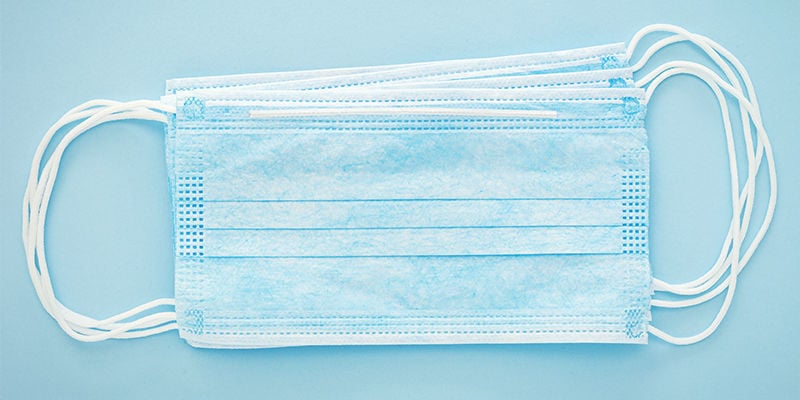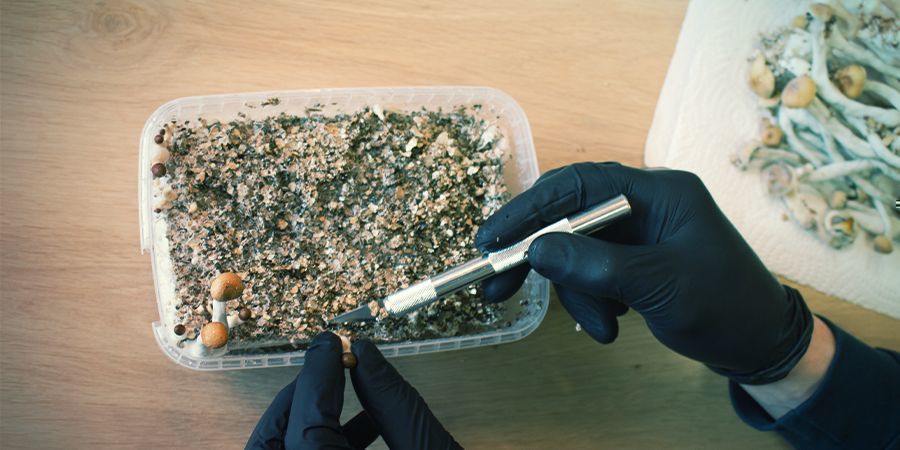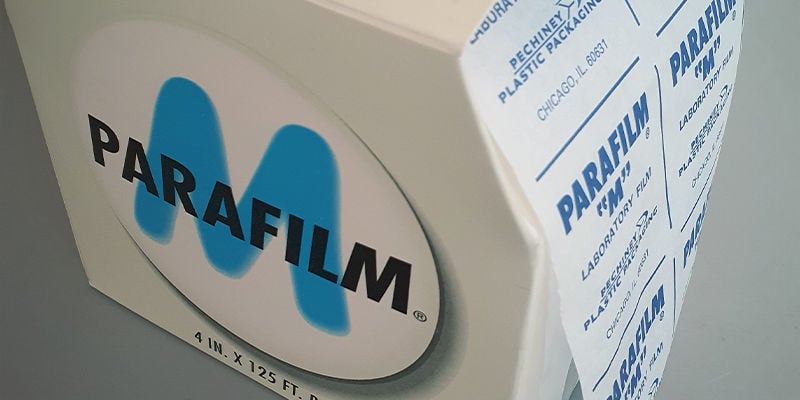
Sterile Technique For Growing Magic Mushrooms
Growing mushrooms is a magical experience, but things can sometimes go wrong. Floating microbes can easily contaminate mushroom cultures when they're exposed to the open air. Use these tips and tools to minimise contamination, and enjoy healthy harvests every time!
Growing magic mushrooms provides the same level of satisfaction as smoking homegrown weed. Not only do these fascinating fungi allow you to tap into visionary realms, but the experience of cultivating them offers moments of magic.
Watching a mat of organic living mycelium 3D-print fruiting bodies before your eyes will immediately make you fall in love with these life forms. But before you get to watch this miracle unfold, you’ll need to gain basic mycology skills to raise your mushrooms from spores into mature psilocybin-containing specimens.
As one of the most important skills you’ll learn, sterile technique allows you to reduce contamination rates, protect your grow from external threats, and enjoy more success. Learn everything you need to know about it below.
What Exactly Is Sterile Technique?
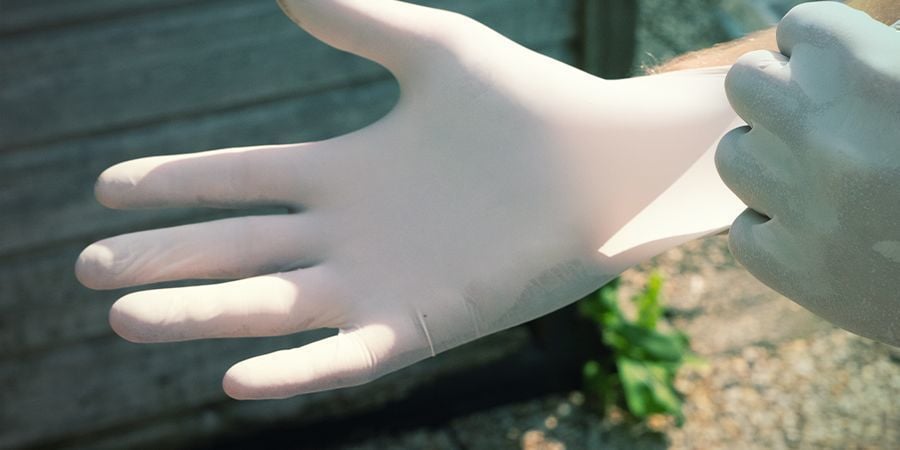
Sterile technique refers to a list of procedures that mushroom growers should adhere to in order to minimise substrate contamination. Keeping your scalpels, Petri dishes, hands, and work surfaces clean will help to kill off microbes that can otherwise reduce yields and even compromise an entire mushroom grow.
The use of specialised equipment, gloves, flames, disinfectant, and dedicated inoculation spaces helps to keep microbial numbers down. Handling equipment in the correct manner, and also assuming an object is contaminated if you’re unsure, will contribute to higher rates of success.
Does Sterile Mean Sanitised in This Context?
Before diving further into the do’s and don’ts of sterile technique, it’s worth familiarising yourself with the difference between sterilisation and sanitisation.
Sanitisation refers to the removal of most microbes from a tool or surface, whereas sterilisation refers to the complete removal of these microscopic creatures.
Although sanitisation does the trick when growing edible species such as oyster mushrooms, properly sterilising your equipment will better prevent the heartbreaking sight of a contaminated jar or box.
Although true sterilisation is almost impossible to achieve outside of a professional clean room, the goal of the mycologist is to edge as close to this state as possible. The use of isopropyl alcohol, naked flames, and protective equipment help to eradicate competitive spores and bacteria, and will keep your grow space squeaky clean.
Why Sterile Technique Is Essential for Magic Mushroom Cultivation
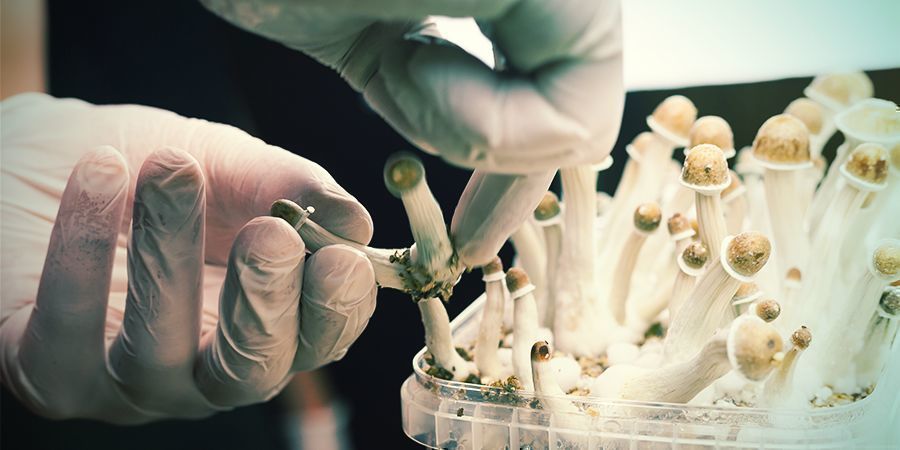
Microbes are everywhere, and we mean everywhere! Teeny tiny fungal spores and bacteria occupy every breath that you take, every surface in your house, and every fingerprint that you leave.
Sterile technique helps to minimise the number of microbes floating around as you pour Petri dishes, inoculate liquid cultures, and transfer colonised grain onto bulk substrates. All of these substrates feature nutrients that fungal mycelium use to grow and survive. However, other lingering fungi and bacteria will also jump at the chance to devour these critical nutrients.
If a spore lands on your Petri agar, BRF cake, or magic mushroom grow kit, it’ll soon send out hyphae, digest the growing medium, and look to reproduce. Not only will this steal away some of those precious nutrients from your magic mushroom mycelium, but it also poses a much greater threat.
Think about growing two different plant species in one pot. They’ll both send down roots, take up a certain amount of space in the substrate, and pull up minerals and water into the plant. Aside from a little competition for resources, they’ll probably get along just fine.
Things are different in the fungal world. When two different mycelial networks meet, they often go to war over resources and growing space. For example, the common mushroom contaminant Trichoderma works aggressively to outcompete other mushrooms on the same substrate. Many magic mushroom grows have fallen victim to this prolific green menace.
By employing sterile technique, you’ll actively reduce the number of these potential contaminants in your environment, allowing your magic mushrooms to grow in peace.
How to Work Sterile with Magic Mushroom Grow Kits
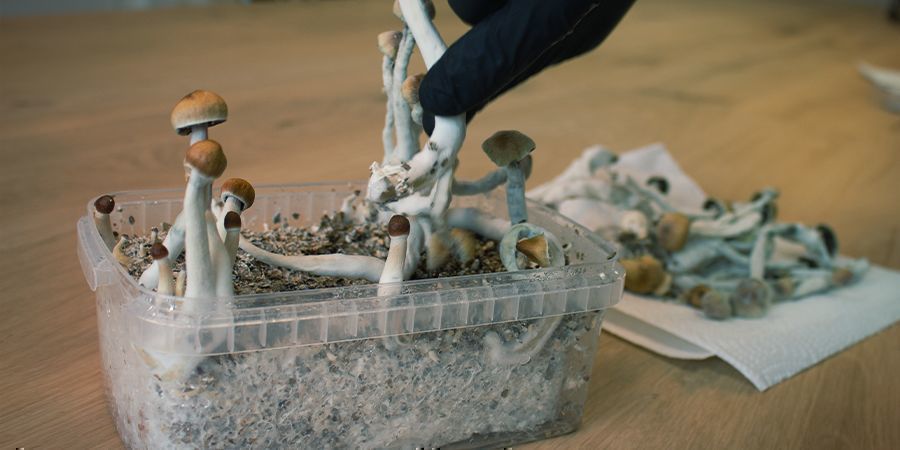
Using a grow kit reduces the chances of contamination. This method removes the need to pour agar plates, prepare liquid cultures, and cook up the sterilised substrate. However, they still require some care to stay clean and microbe-free.
Zamnesia grow kits arrive colonised and ready to fruit. Simply keep them adequately misted and sheltered under the bag provided to boost humidity and protect them from microbes. Because the blocks are fully colonised, our grow kits pose a very low risk of contamination and require very little effort when it comes to sterile technique.
How to Create a Sterile Environment When Preparing Your Spawn and Substrate
Preparing your spawn and substrate requires a lot more care and attention to detail. Transferring agar or liquid culture to grain spawn, and grain spawn to substrate, requires exposing cultures to the open air. This exposure to the outside world comes with a high risk of contamination. Use the recommended tools and devices below to reduce the risk of microbial contact when making transfers.
Laminar Flow Hood
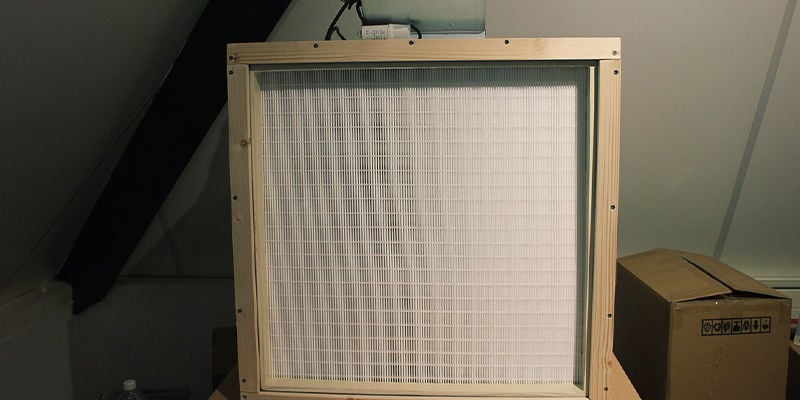
Laminar flow hoods are one of the most critical pieces of kit for more serious mycologists. These devices draw in air through a blower and pass it through a particle filter that traps bacteria and fungal spores.
The clean air then passes over the workspace, pushing away any microbes in the air that would otherwise fall into open Petri dishes and substrate containers. Laminar flow, as opposed to turbulent flow, follows a smooth and regular path that effectively pushes away microbes in a uniform current.
Laminar flow hoods are the gold standard when looking to safely work with spore prints and syringes.
Still Air Box
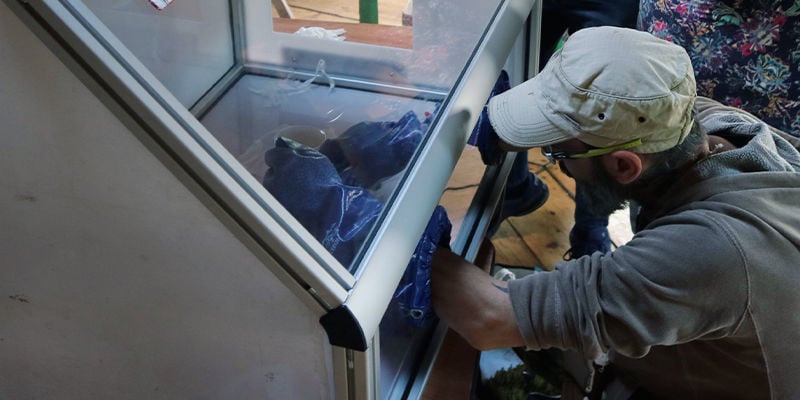
Still air boxes are a step down from flow hoods. They are easy to make, cheap, and get the job done. Effectively a plastic box with two holes in the side, still air boxes form a barrier against the outside world. Mycologists can pour plates and make transfers inside the sanitised boxes (after cleaning their hands) with a much lower risk than doing so in the open air.
Despite their low costs, still air boxes require a bit more attention. You’ll need to clean them out with a 10% bleach solution in between each use. Also, users should never light a flame inside a box after applying alcohol.
Tools You Can Use to Prevent Contamination
The devices above work as superb first lines of defence against microbial contamination. To further reduce the risk, use the tools below every time you make a transfer and conduct inoculations.
Mouth Masks
Wearing a mouth mask when looking down into a Petri dish or open substrate box will help to catch some of the microbes you release every time you exhale. Fungi and bacteria aren’t just floating around the outside world; they make it in and out of your lungs as well!
Latex/Nitrile Gloves
Gloves help to keep things clean and tidy when you’re handling your gear. They are much easier to clean or dispose of between transferring cultures, and prevent the bacteria under your nails from posing any risk.
Disinfectant Gel
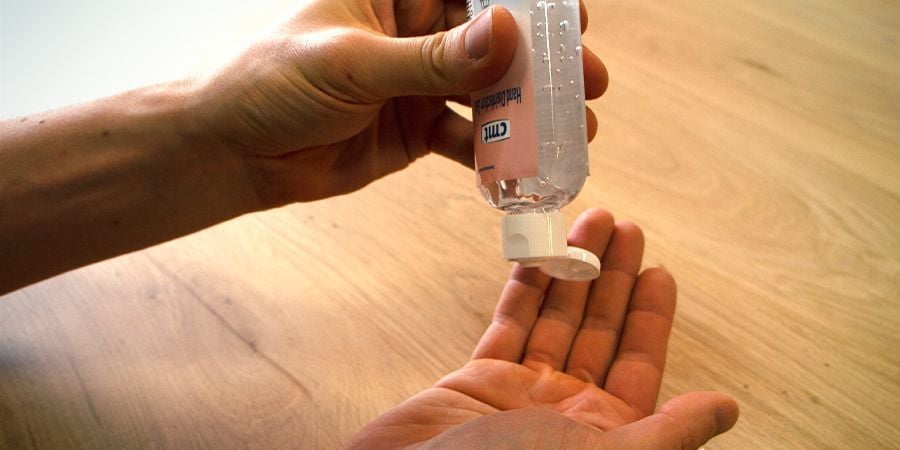
Lather your gloves with disinfectant gel routinely during each procedure. Add a squirt between your palms between each individual transfer of agar, liquid culture, or spawn into jars and containers.
Bleach
Dilute bleach into a 10% solution to wipe down work surfaces and the inside of a still air box to kill microbes instantly.
Scalpel
These sharp tools require some dexterity and patience. Once mastered, they are the go-to tools for cutting up wedges of agar and transferring them into liquid cultures and grain spawn jars.
Alcohol Wipes
Alcohol shows no mercy to bacteria and fungi. Use alcohol wipes to clean the tips of scalpels and syringes before each transfer to ensure you’re not introducing the wrong kind of microbes into your jars.
Parafilm
This flexible material wraps easily around the edges of Petri dishes, preventing contaminated air from entering and disrupting the mycelial culture within.
Lighters/Alcohol Lamp
Use these tools to cleanse the tips of syringes and scalpels. However, they are only compatible with laminar flow hoods. Never use naked flames inside a still air box.
-
 5 min
July 29, 2024
How To Store Magic Mushrooms
If you want your shrooms to stand the test of time, then you'll need to not only dry them properly, but store them adequately too. While not difficult, it is important to get this right if you want...
5 min
July 29, 2024
How To Store Magic Mushrooms
If you want your shrooms to stand the test of time, then you'll need to not only dry them properly, but store them adequately too. While not difficult, it is important to get this right if you want...
-
 5 min
April 26, 2022
How To Harvest Magic Mushrooms
Now the time has come to harvest your magic mushrooms, you're almost there. Mastering this stage is fairly simple, but crucial if you want to reap the rewards of all your hard work. Find out how...
5 min
April 26, 2022
How To Harvest Magic Mushrooms
Now the time has come to harvest your magic mushrooms, you're almost there. Mastering this stage is fairly simple, but crucial if you want to reap the rewards of all your hard work. Find out how...
-
![How To Grow Magic Mushrooms Indoors [3 Methods]](https://www.zamnesia.com/us/modules/prestablog/themes/responsive/up-img/slide_2060.jpg?caf944d1febfc09552745fdff7015a5c) 5 min
February 22, 2022
How To Grow Magic Mushrooms Indoors [3 Methods]
Growing magic mushrooms at home needn't be difficult. Here we look into three different growing methods, ranging from the beginner-friendly to the advanced. Whichever one you choose, big, healthy...
5 min
February 22, 2022
How To Grow Magic Mushrooms Indoors [3 Methods]
Growing magic mushrooms at home needn't be difficult. Here we look into three different growing methods, ranging from the beginner-friendly to the advanced. Whichever one you choose, big, healthy...
-
 3 min
April 23, 2020
How Much Light Do Magic Mushrooms Need To Grow?
Mycelium requires some degree of light in order to develop mature fruiting bodies. While some growers prefer to use LED or CFL lights on 12-hour schedules, others simply rely on the indirect...
3 min
April 23, 2020
How Much Light Do Magic Mushrooms Need To Grow?
Mycelium requires some degree of light in order to develop mature fruiting bodies. While some growers prefer to use LED or CFL lights on 12-hour schedules, others simply rely on the indirect...
-
 3 min
April 2, 2020
How To Harvest Multiple Flushes From A Magic Mushroom Grow Kit
Beginners in the world of magic mushroom growing might be daunted by traditional cultivation methods. However, with grow kits, you don't need a green thumb to produce some quality mushrooms. If you...
3 min
April 2, 2020
How To Harvest Multiple Flushes From A Magic Mushroom Grow Kit
Beginners in the world of magic mushroom growing might be daunted by traditional cultivation methods. However, with grow kits, you don't need a green thumb to produce some quality mushrooms. If you...
-
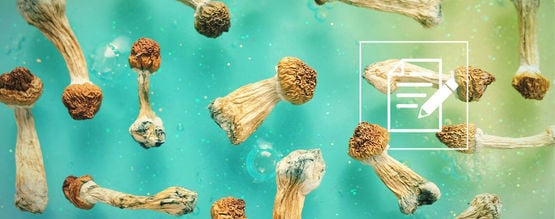 8 min
June 13, 2019
What To Know About Shrooms (Magic Mushrooms)
Shrooms are treasured for their strong psychoactive properties, producing strong hallucinations, euphoria, altered thinking processes, and a distinct clarity unlike any other substance. Below we...
8 min
June 13, 2019
What To Know About Shrooms (Magic Mushrooms)
Shrooms are treasured for their strong psychoactive properties, producing strong hallucinations, euphoria, altered thinking processes, and a distinct clarity unlike any other substance. Below we...











 United States
United States

